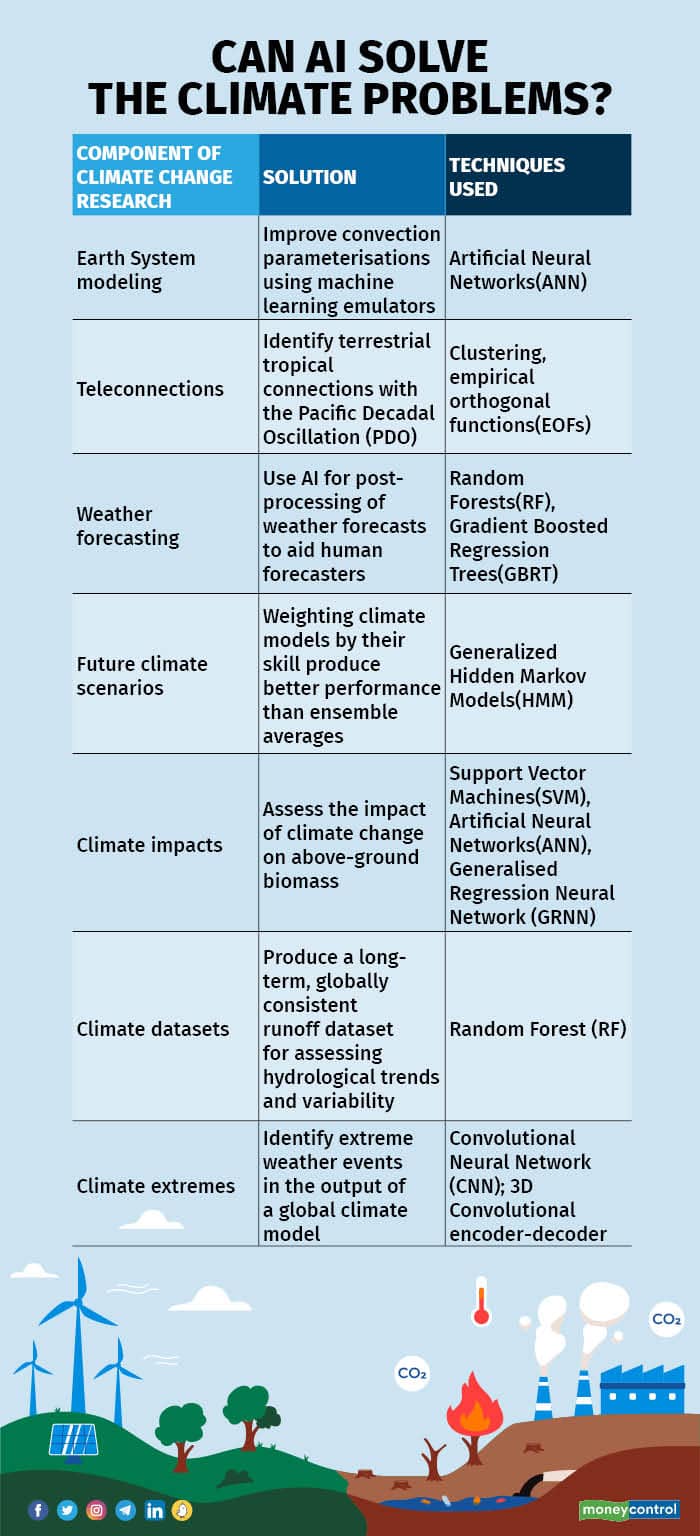If AI is to be used to its fullest potential to fight climate change, especially in the Global South, promising solutions would need money and networks.
The shifting climate will significantly impact global environmental, social, and economic systems. Several of its ecological repercussions, such as more frequent extended droughts and damaging storms, are already being felt.
Thus, mitigation is essential, including efforts to reach net-zero emissions by 2050. Yet, mitigating the damage will necessitate a greater emphasis on adaptation and resilience, from crisis reaction to long-term planning.
In addition, these efforts will require assistance from research, financing, and education. Artificial Intelligence (AI) is particularly positioned to aid in managing these complicated difficulties due to its ability to collect, process, and understand massive, complex datasets on emissions and climate effects.
We can also use it to refocus global climate efforts on the most vulnerable regions.
Existing solutions
How Machine Learning algorithms are already being used in climate science
Many climate researchers use Machine Learning methods to learn about certain parts of the Earth System (below table).
There is a lot of potential for Machine Learning approaches to be used to find the more connected behaviours between different parts of the Earth System and how they add up to affect the climate as a whole.

Obstacles to progress
Many AI solutions for climate change are well-established and ready for wide use. However, most AI solutions for climate change today are scattered, hard to get to, and need more resources to grow.
Also, only some organisations are actively working on climate and AI issues, and leaders who are already working in this area face many barriers to using climate AI. For example, 78 per cent of those surveyed say they need help to access AI experts inside or outside their organisation. In addition, 77 per cent say they need help to find AI solutions, and 67 per cent say they need help to get their organisation to trust AI data and analysis.
How to resolve it?
AI solutions must be easy to use if they are to be widely used. It is true whether they are made for corporations, governments, or the general public. They must be easy to find, give the user real benefits, and provide clear information about what to do next.
Tools and connections: If AI is to be used to its fullest potential to fight climate change, especially in the Global South, promising solutions also need money and networks. They need access to money, people who can make decisions, and trained practitioners so that we can use it on a large scale. Financial support can help bridge the gap between academic research and large-scale deployment, and connections to policymakers and business leaders can help spread the word and encourage more people to use the technology. Sharing information about best practices and promising applications is another way to ensure that solutions are ready for widespread use by the government and businesses. These resources and networks are beneficial for finding answers to problems in the Global South.
Building up skills: A lot of capacity building is needed for solutions to work. Training and reskilling can ensure that government workers, leaders in the private sector, and other stakeholders can use and understand AI solutions well in the most critical situations. And AI research, mainly done in institutes and companies in the Global North, needs to be more inclusive. Otherwise, it risks ignoring the Global South's needs, where climate change will hit many countries harder.
Trust-building: Given how complicated AI is and how easy it is to act unethically, whether on purpose or by accident, people who use it need to earn the trust of climate leaders. Because of this, we must responsibly use AI, data must be detailed and reliable, and the results must be easy to understand.
Conclusion
In conclusion, numerous scientific disciplines encourage the routine adoption of Machine Learning approaches with varying degrees of success. However, even though AI has a lot of potential, it can't be used to solve the climate problem on its own. Instead, it should be used as one of several ways to solve this global problem. Therefore, people, communities, and organisations with a role in tackling the climate catastrophe, regardless of their formal involvement in AI or climate-related themes, should evaluate how other new technologies can aid in lowering barriers to scale for these as well.